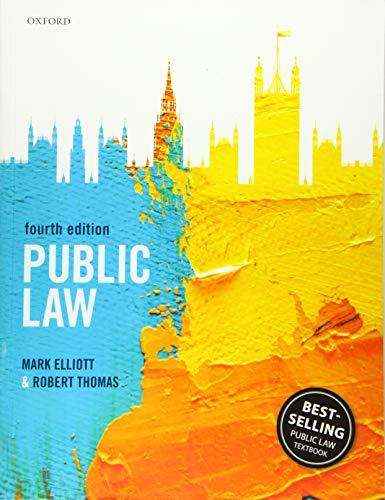Question
Hello, my answers are in bold. I'd like to know if everything is good and also I have some questions. I'm not sure about the
Hello, my answers are in bold. I'd like to know if everything is good and also I have some questions. I'm not sure about the questions reguarding Marcella example. Also, I'm not sure about nubers 5 and 6!
- Identify each of the following courts. If not indicated, specify whether it is a state or federal court.
- This state court has general jurisdiction over civil and criminal cases and takes testimony from witnesses and receives evidence. Trial courts.
- This court has appellate jurisdiction and is part of a court system that is divided into geographic units called circuits.US court of appeals.
- This state court hears only issues related to divorce and custody matters. It has original jurisdiction. Circuit court.
- This court can exercise jurisdiction in matters involving federal questions and diversity of citizenship. It receives testimony and other evidence. Federal Court.
- The decisions of this state court are usually final. It is the highest appellate court within its court system. State Supreme Court.
- This federal court has nine justices. It has original jurisdiction over several types of cases but functions primarily as an appellate court. There is no automatic right to appeal to this court. Federal Supreme Court.
- Look at Exhibit 6.4 and answer these questions:
- How many federal circuits are there? 13
- In which federal circuit is your state located? 11 ( I'm in Florida)
- How many federal judicial districts are located in your state? 3 In which federal district is your community located? Southern
- Marcella, who is from Toledo, Ohio, drives to Troy, Michigan, and shops at a popular mall. When leaving the parking lot, Marcella runs a red light while texting and causes an accident resulting in personal injuries to the driver of the other vehicle. On what basis could a Michigan court obtain jurisdiction over Marcella? The Long Arm Statute.If the damages in the lawsuit exceed $75,000, could a federal court in Michigan have jurisdiction over this case? Yes. On what jurisdictional basis? Diversity Jurisdiction. What type of jurisdiction would exist if both the courts of the state of Michigan and the federal court have jurisdiction over this case? Concurrent Jurisdiction. Discuss the other types of jurisdiction the court may have in this case (such as in personam jurisdiction, in rem jurisdiction, subject-matter jurisdiction, limited jurisdiction, general jurisdiction, original jurisdiction, appellate jurisdiction, concurrent jurisdiction, and exclusive jurisdiction).
A court can exercise personal jurisdiction (in personam jurisdiction) over residents of a certain geographic area. However, in this case, under the authority of a long arm statute, a state court can exercise personal jurisdiction over nonresident defendants based on activities that took place within the state. Before a court can exercise jurisdiction over a nonresident under a long-arm statute, though, it must be demonstrated that the nonresident had sufficient contacts (minimum contacts) with the state to justify the jurisdiction.
A court can also exercise jurisdiction over property that is located within its boundaries even if the parties involved in the suit do not. This is in rem jurisdiction.
Subject-matter jurisdiction concerns the kinds of cases a certain court can hear. In both the state and the federal court systems, there are courts of general jurisdiction and courts of limited jurisdiction. The basis for the difference is the subject matter of cases heard.
- Using the materials presented in the chapter, identify the following methods of alternative dispute resolution:
- The parties to a divorce meet with a neutral third party who emphasizes points of agreement and proposes solutions to resolve their dispute. After several hours, the parties reach a compromise. Mediation.
- The parties to a contract dispute submit it to a neutral third party for a legally binding resolution. The neutral third party is not a court. Arbitration.
- The plaintiff and defense attorneys in a personal-injury case propose settlement figures to one another and their clients in an effort to resolve the lawsuit voluntarily. Negotiation.
- The attorneys from the personal-injury example above are able to reach an acceptable settlement figure of $100,000. They draft an agreement whereby the plaintiff gives up her right to sue in exchange for a payment of $100,000 by the defendant.
- A commercial dispute involving $95,000 in damages is filed in a federal court. The judge requires the parties' attorneys to present their arguments and supporting evidence, excluding witnesses, to the jury. The jury then renders a nonbinding verdict. Once the nonbinding verdict is rendered, the parties reach a settlement.
Step by Step Solution
There are 3 Steps involved in it
Step: 1

Get Instant Access to Expert-Tailored Solutions
See step-by-step solutions with expert insights and AI powered tools for academic success
Step: 2

Step: 3

Ace Your Homework with AI
Get the answers you need in no time with our AI-driven, step-by-step assistance
Get Started


